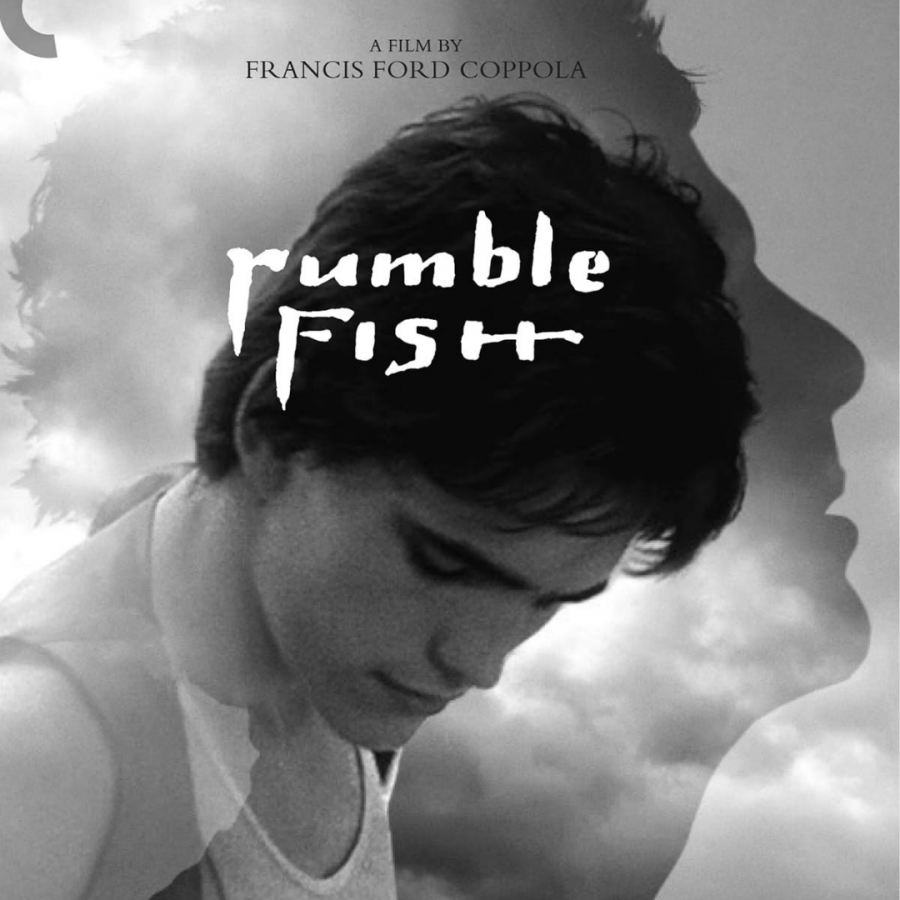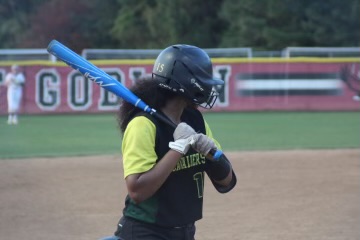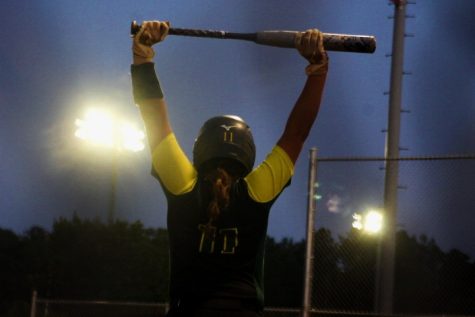GUEST: Rumble Fish creates an artful take on a playful genre
Our Guest film reviews are a collaboration with Billy Kaskay’s Ethics and Culture in Film elective.
The 1980s created a gold standard for coming of age teen films. Characterized by their lighthearted nostalgic stories with a heartfelt message, directors like John Hughes helped form the genre. The genre was being defined by movies like The Breakfast Club and Sixteen Candles until Francis Ford Coppola’s self-proclaimed “art film for teens” in 1983. Coppola’s Rumble Fish reigns above all others from this era with its breathtaking cinematography, stunning performances, and deeper-level symbolism. In just 94 minutes Coppola takes you on a journey through the eyes of a reckless Rusty James who tries to find his purpose with the guidance of his older brother, The Motorcycle Boy, who lives in a questionable mental state throughout the movie. Rusty James must learn how to set himself free from the society containing him, just as the Motorcycle Boy learns to release the contained rumble fish.
The film opens with the introduction of the gang, BJ, Steve, Smokey, and Rusty James. Since Rusty James’ older brother the Motorcycle Boy left for California, the gang was left in the hands of Rusty James and has since become misled by his recklessness. The Motorcycle Boy’s much-needed return happens in the middle of a fight, rescuing Rusty James. While it seems everything will go back to normal, Rusty James notices a few very concerning differences in his brother since his return. Rusty James continues his average life, troubles with his romantic interest, Patty, conflict in school, drinking, and partying. However, with the help of his older brother, he comes to realize how trapped he is within time. The Motorcycle Boy guides him through his odd tactics and helps him find his way out because he realized his chance is gone. The biggest standout in the film is the intense shadows and the unconventional camera angles. The entire movie feels as though it has a shadow cast over it much like its predecessors in film noir. This sets up a much-needed tone throughout the movie to make up for the otherwise not very interesting plot, however, it still works well due to the variation Coppola puts into the cinematography.
Francis Ford Coppola does an excellent job of creating this “art film for teens”. Unlike most of the genre, this movie dives deep into symbolism that leaves the watcher thinking about it for days. While I believe almost all of the elements of the film are near perfect, the cinematography stands out more than the rest. Taking influence from German Expressionist films such as The Cabinet of Dr. Caligari, Coppola creates a mood through the visuals unlike any other. He uses camera angles more than anything as a tool for perspective, along with harsh, purposeful shadows throughout the entire film. The movie is shot in black in white, with only three moments in the film being partially colorized. He does this presumably to shoot the film through the eyes of Motorcycle Boy, who has apparent color blindness that causes him to see in black and white. This usage of color for further subtle symbolism is a fantastic choice from Coppola that is not utilized often in film. He uses shadows almost like an additional character that advances the plot. The long, fast-moving casted shadows help him create his underlying theme of passing time, along with the many shots of the sky that have been sped up throughout the film. It’s not just the cinematography that makes this film such a standout, the performances, and the music are able to create a mood unlike any other. Mickey Rourke’s performance as the Motorcycle Boy is the shining star of this film. While he has very few lines in comparison to the other characters, his performance is arguably the most powerful. While all the performances in the film are fantastic (including the young Sofia Coppola achieving a great name for herself at such a young age) he does such an excellent job demonstrating the layer of the character through his facial expressions alone. He dances along the line of stability, leaving the audience just as confused about his mental state as Rusty James. In addition to the excellent performances, the soundtrack creates a feeling of nostalgia and confusion that the audience can share with Rusty James. Using distant, echoing songs and sound effects very similar to film noir he captures the almost mysterious mood. He also uses sound to give the audience a further look into the mind of the Motorcycle Boy, who as well as his color blindness has what is referred to as “selective hearing loss”, leaving some of the film jumbled with noise and silent in some parts. Overall, the movie does an excellent job to make such a boring plot entertaining. On paper, Rumble Fish is a generally boring concept that would otherwise be written off had Coppola not used his eye for cinematography to absolutely bring it to life. This is a film I would say is near perfect, with only one scene feeling completely out of place. Near the end of the film, Rusty James is jumped and knocked out, and there is a sequence where he is shown being levitated out of his body and he floats through all the aspects of his life before returning to his body. While I feel as though this was an interesting addition at least, it felt generally out of place and in no way crucial to the film. Without this scene, the film would’ve moved forward perfectly and not left the watcher wondering, “What was that?”. The rest of the film flows perfectly however, this one sequence sits out more than the rest and feels almost feverish.
Coppola uses his many skills to absolutely nail this film and sets his message up beautifully. By the end of the film, the watcher is left dissecting all of the subtle messages for themselves to create their personal meaning, which I believe is crucial to the deeper meaning of a film. The idea of the danger of caged animals resonates through the entire film, with the satisfying and inevitable ending setting all the characters free from their own walls. This film excels in all categories, only leaving one standout scene that leaves the viewer confused. I would recommend this film to those seeking a deeper meaning without losing the fun and excitement of all the 80’s teen films. ★★★★☆







